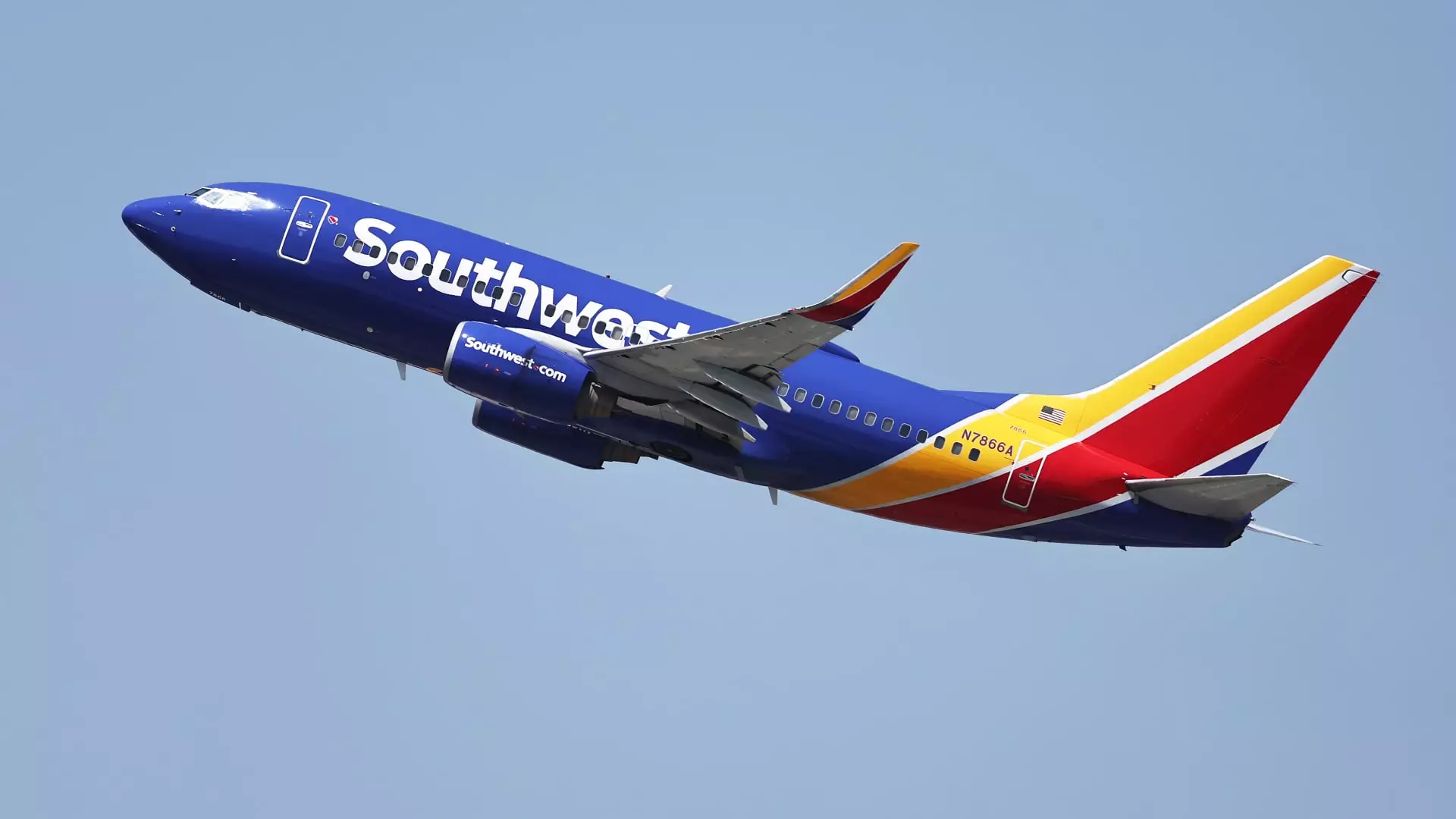The latest announcements from Southwest Airlines and American Airlines reveal a robust trajectory for the airline industry as they elevate their fourth-quarter financial forecasts. This confidence reflects a resurgence in consumer demand alongside escalating ticket prices, two factors that have invigorated investor sentiment and propelled share prices for these airlines.
Southwest Airlines has notably revised its expectations for fourth-quarter unit revenue, now projecting an increase between 5.5% and 7%, up from an earlier ceiling of 5.5%. This upward trend not only signals resilience in consumer travel preferences but also highlights the effectiveness of Southwest’s strategic adjustments. By focusing on eliminating unprofitable routes, the airline appears to be realigning its operational focus on more sustainable revenue-generating flights. Furthermore, the company’s positive outlook extends into 2025, driven by encouraging revenue patterns and optimistic booking figures for the upcoming holiday season. These adjustments suggest that operational efficiency paired with customer demand can lead to sustained profitability.
Similarly, American Airlines has raised its revenue projections for the fourth quarter, now estimating unit revenue that could reflect stability or modest growth—ranging from flat to an uptick of 1% compared to the previous year. Initially, the airline had cautioned investors about potential declines of up to 3%. This turnaround signals an invigorated market response and a potential for improved financial health as they navigate through the traditionally lucrative holiday travel period.
In a significant move to bolster its financial framework, American Airlines also announced an updated earnings forecast, now predicting adjusted earnings of 55 to 75 cents per share, a significant improvement from the previously projected 25 to 50 cents. A show of strength is also seen in its decision to partner exclusively with Citi as its credit card provider, ending its relationship with Barclays. Such strategic moves might not only enhance revenue diversification but also improve customer engagement through tailored credit offerings.
Adding to this positive narrative, JetBlue Airways has recently adjusted its own revenue expectations upward while signaling further pruning of unprofitable routes—a strategy shared across the competing airlines. With plans to refine its summer 2025 schedule for Europe, these adjustments suggest a collective industry approach to optimize performance and navigate post-pandemic recovery challenges.
The renewed vigor within these airlines may point to a broader confidence that spans the industry. As travel demand rebounds, price increases and strategic route management could enable these carriers to thrive in an evolving market landscape, which remains sensitive to both consumer preferences and economic fluctuations.
The optimistic forecasts from Southwest and American Airlines indicate that the airline sector may be entering a period of sustained growth, buoyed by strong demand and strategic operational adjustments. As these trends unfold, industry stakeholders will be keenly monitoring how these dynamics play out against the backdrop of changing economic conditions.


Leave a Reply